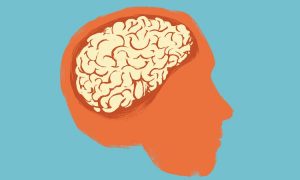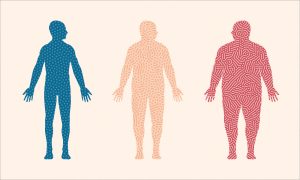
Technically, winter lasts from late December to late March, but sometimes it can feel much longer.
After the hustle and bustle of the holidays has faded away, we’re left with nothing but short, dark days and constant cold. This uncomfortable combo often leaves people feeling uncomfortable, fatigued and downright melancholy.
For a long time, the “winter blues” were dismissed as a nothing but a ”fun hangover” from the holiday season, but we now know that for some people, it’s a legitimate form of depression known as seasonal affective disorder, or appropriately, SAD.
So what causes seasonal affective disorder, and is there any thing we can do to ease its impact on our health and emotions? Read on to find out.
What Is Seasonal Affective Disorder?
As we’ve mentioned, SAD is a type of clinical depression, but instead of being triggered by events in your life, SAD waxes and wanes with the seasons. “Seasonal affective disorder (SAD) is a type of depression that’s related to changes in seasons — SAD begins and ends at about the same times every year,” explains the Mayo Clinic. “If you’re like most people with SAD, your symptoms start in the fall and continue into the winter months, sapping your energy and making you feel moody.”
Causes Of Seasonal Affective Disorder
If SAD is out of our control, what causes it? While science has yet to isolate any one cause of SAD, doctors agree that the following are contributing factors:
Your Biological Clock – Less access to sunlight during the winter can sometimes lead to a vitamin D deficiency, upsetting the body’s internal clock (circadian rhythm) and leading to a depressed mood.
Your Serotonin Levels – Reduced exposure to sunlight has also been shown to trigger a drop in serotonin, a brain chemical (neurotransmitter) that helps to regulate our mood.
Your Melatonin Levels – The changing of the seasons has also been known to affect melatonin levels in the body, which can have a negative impact on quality of sleep, energy and you guessed it, mood.
Natural Remedies For Seasonal Affective Disorder
Being diagnosed with SAD doesn’t necessarily mean reaching for prescribed antidepressants, however. Depending on the severity of your condition, the following natural remedies may help to improve your health and mood.
1. Light Therapy – Two of the three causes listed above involve lack of sunlight, which is why many who suffer from SAD find relief in light therapy. Even though winter gives us precious few hours of natural sunlight, the benefits can be recreated indoors using a light therapy box. Light therapy mimics natural outdoor light and appears to cause a change in brain chemicals linked to mood. It’s recommended that you consult with your doctor to decide which light therapy box is right for your needs, and how often to use it.
2. Exercise – It’s well known that regular exercise is linked to increased serotonin levels which can help us feel more energetic, relaxed and positive. That’s why exercise becomes doubly important in the winter, when SAD is likely to strike. Focus on activities you can perform indoors, like walking/running on a treadmill, yoga, Zumba, CrossFit or other workouts that focus on both cardio and strength.
3. Supplements – A lack of vitamin D in your life is fairly easy to combat with the use of high-quality supplements and fortified foods. Doing so could even have positive side effects for your bone health and immune system!
4. Outdoor Time – Yes, it’s COLD, but if you have the chance to get outside for some fresh air and to soak up the precious few hours of natural sunlight that are available this time of year, TAKE IT! Bundle up in a bunch of layers and ski, snowshoe, build a snowman with your kids, or simply take the dog for a walk. Bonus! All of these things also count as exercise.
5. SAD-Busting Foods – What you choose to put in your belly can also be a weapon in the fight against SAD. Lots of lean protein, leafy greens and fish will keep hormones in check and boost serotonin levels, while whole-grain carbs will fuel your energy and keep you feeling full.
Image Credit: Thinkstock
Click here to view original web page at www.care2.com













